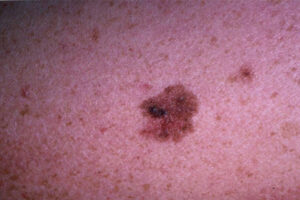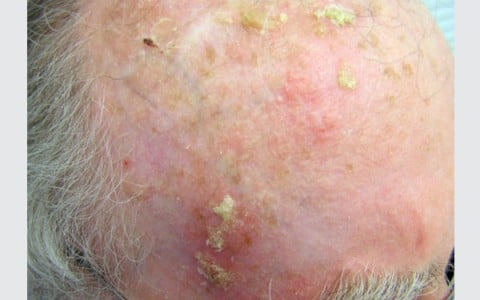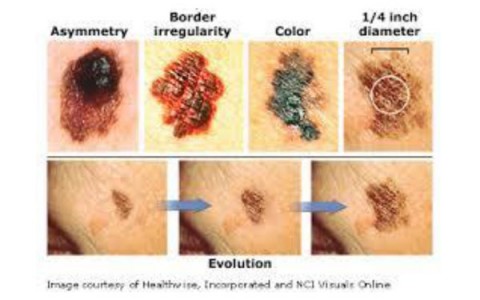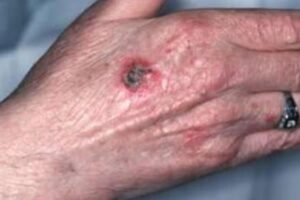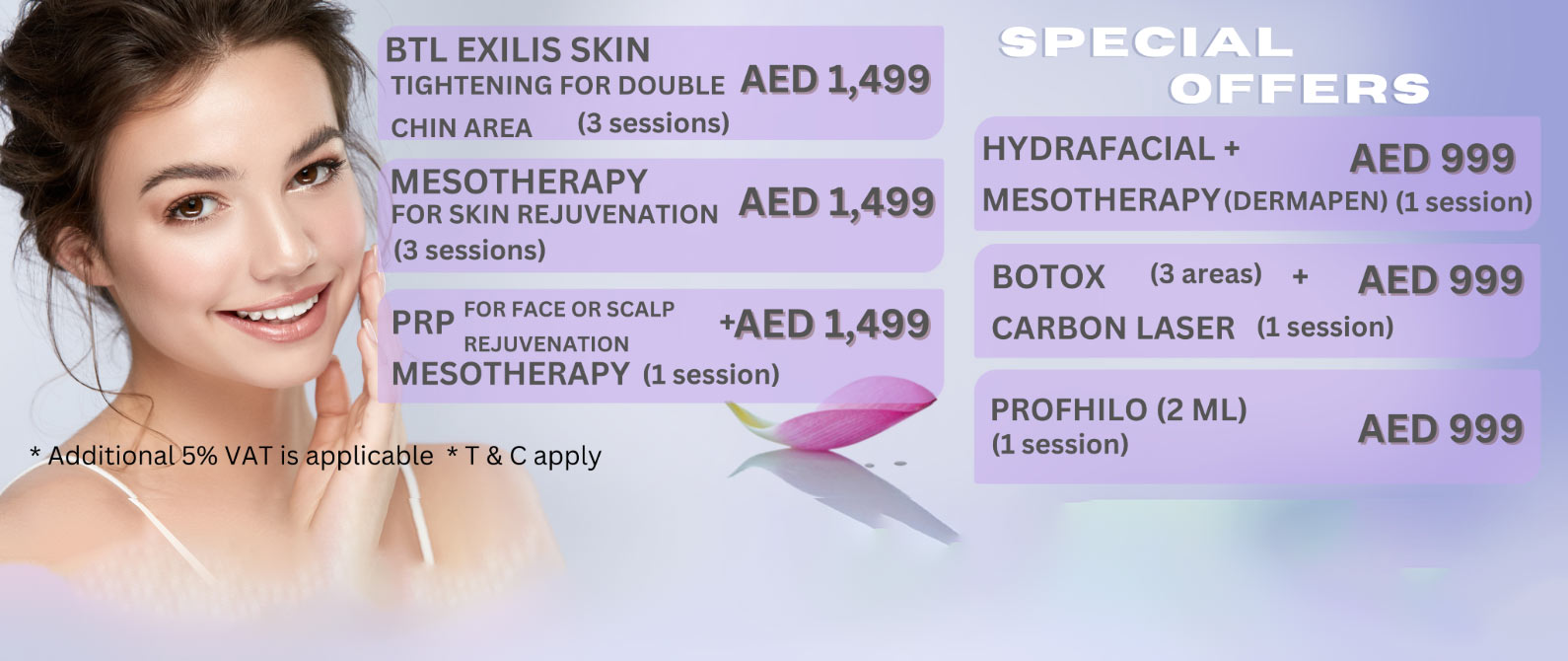This is the deadliest form of skin cancer. Melanoma may develop on normal skin or in an existing mole. A change to the shape, color, or diameter (size) of a mole can be a sign of melanoma. Other changes to watch for include a mole that becomes painful or begins to bleed or itch.
Some melanomas develop on normal skin. A new growth, particularly one that does not match your other moles, could be melanoma.
Melanoma also can be developed under fingernails or toenails. This will look like a brown or black streak underneath the nail.
Although melanoma is more common in those with light colored skin tone, people with skin of color can also get melanoma. In such cases the melanoma usually appears on the palms of the hands, soles of the feet, under the nail, in the mouth, or in genitals.
ABCDEs of Melanoma Detection
When melanoma is caught early and treated, the cure rate is nearly 100 %. Performing skin self-examinations can help you find skin changes that could be an early melanoma. When looking at your skin for signs of melanoma, it helps to keep in mind the ABCDEs of melanoma:
A stands for ASYMMETRY; one-half does not look like the other half.
B stands for BORDER; irregular, scalloped, or poorly defined border.
C stands for COLOR; varied from one spot to another; shades of tan and brown, black; sometimes white, red, or blue.
D stands for DIAMETER; melanomas are most often greater than 6 millimeters (the size of a pencil eraser) when diagnosed, but they can be smaller.
E stands for EVOLVING; a mole or skin growth that looks different from the rest or is changing in size, shape, or color.
Make an appointment to see a board-certified dermatologist as soon as possible if you notice a spot or mole on your skin that has any of these characteristics:
- Fits any of ABCDEs of Melanoma
- Differs from the other moles and spots on your skin
- Changes, itches, or bleeds, even if the spot is smaller than 6 mm
